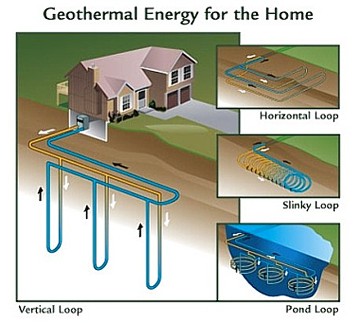Iowa Governor Approves Residential Tax Credits For New Geothermal Heat Pumps and Retrofits
 June 15, 2012
June 15, 2012  Kyriaki (Sandy) Venetis
Kyriaki (Sandy) Venetis Iowa Governor Terry Brand has enacting a series of tax incentives for new residential geothermal heat pump installations and retrofits.
 Stock photo.
Stock photo.
For people that aren’t familiar with them, geothermal heat pumps are similar to ordinary heat pumps, but instead of using outside air, they use the earth’s natural underground systems to provide heating, air conditioning, and in most cases, hot water.
Actually, the California Energy Commission’s Consumer Energy Center gives one of the best explanations about how these systems work, before talking more about the Iowa tax credits.
The California energy center explains that wherever you live, a few feet below the earth’s surface, the ground remains at a relatively constant temperature regardless of the outside air temperature.
The center says, “Although the temperatures vary according to latitude, at six feet underground, temperatures range from 45 degrees to 75 degrees Fahrenheit. That’s the principle behind geothermal heat pumps. In the winter, they move the heat from the earth into your house. In the summer, they pull the heat from your home and discharge it into the ground.”
The California center also says, “Studies show that approximately 70 percent of the energy used in a geothermal heat pump system is renewable energy from the ground. The earth’s constant temperature is what makes geothermal heat pumps one of the most efficient, comfortable, and quiet heating and cooling technologies available today. While they may be more costly to install initially than regular heat pumps, they can produce markedly lower energy bills - 30 percent to 40 percent lower.”
Through incentives enacted last month in Iowa, geothermal heat pumps installed on residential properties are now eligible for a state tax credit that is equal to six percent of the cost of a system, which is equal to 20 percent of the federal residential geothermal tax credit.
